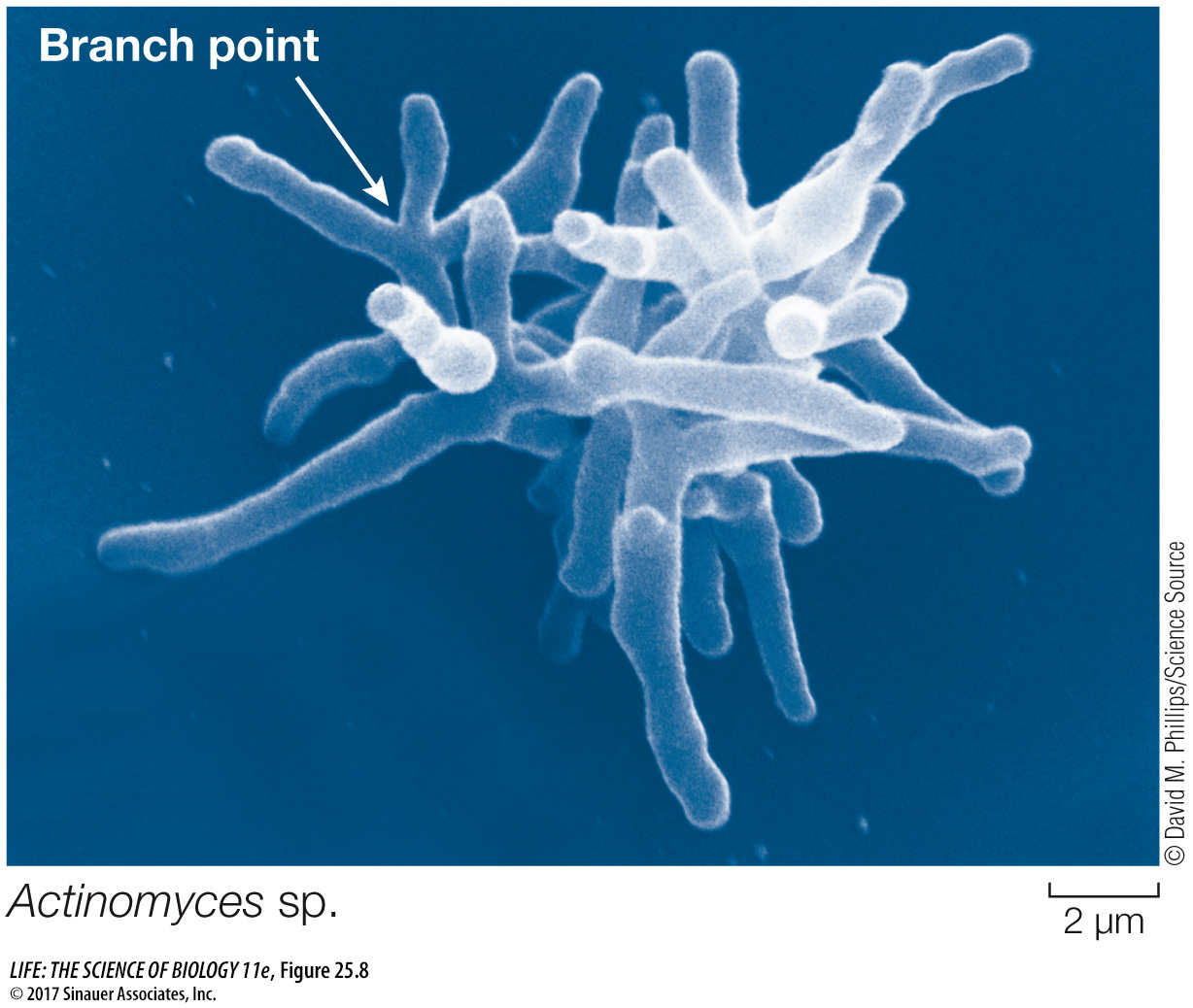Actinobacteria include major pathogens as well as valuable sources of antibiotics
Actinobacteria, also known as high-GC Gram-positive bacteria, have a higher ratio of G-C to A-T nucleotide base pairs than do the firmicutes (low-GC Gram-positives). These bacteria develop an elaborately branched system of filaments (Figure 25.8) that resembles the filamentous growth habit of fungi, albeit at a smaller scale. Some actinobacteria reproduce by forming chains of spores at the tips of the filaments. In species that do not form spores, the branched, filamentous growth ceases and the structure breaks up into typical cocci or bacilli, which then reproduce by binary fission.

Figure 25.8 Actinobacteria Often Produce Branching Filaments The tangled, branching filaments seen in this scanning electron micrograph are typical of this medically important bacterial group.
The actinobacteria include several medically important bacteria. Mycobacterium tuberculosis causes tuberculosis, which kills 3 million people each year. Genetic data suggest that this bacterium may have been infecting our ancestors for almost 3 million years, making it the oldest known human bacterial pathogen. The genus Streptomyces produces streptomycin as well as hundreds of other antibiotics. We derive most of our antibiotics from actinobacteria.
